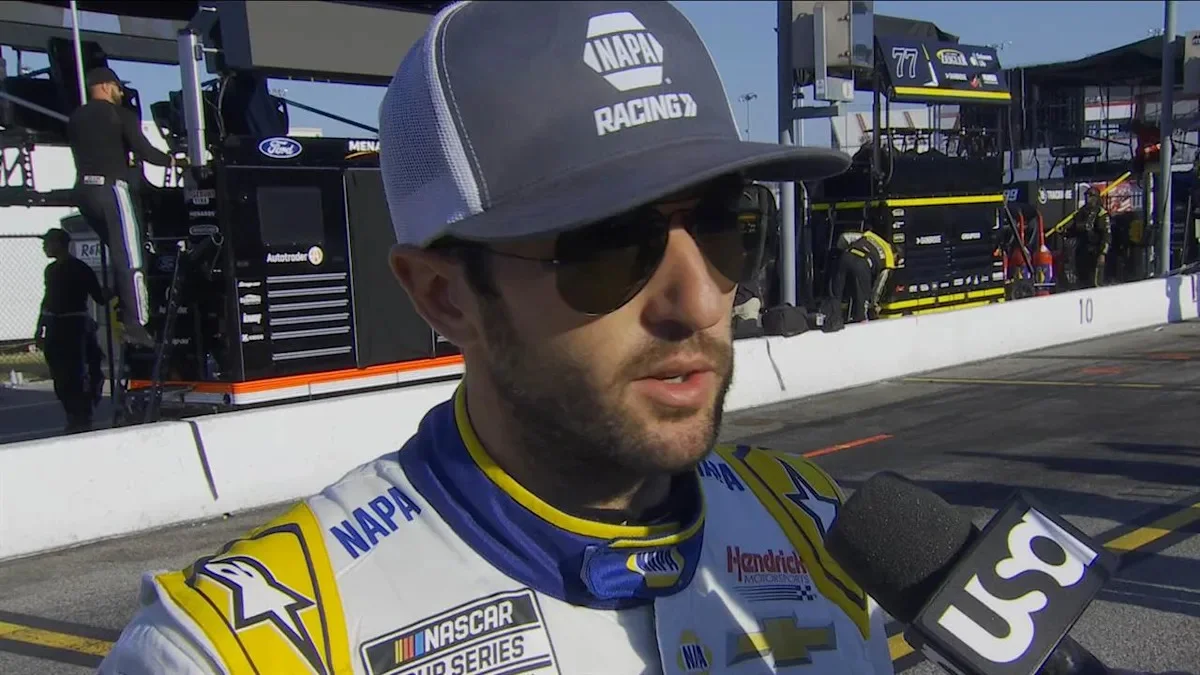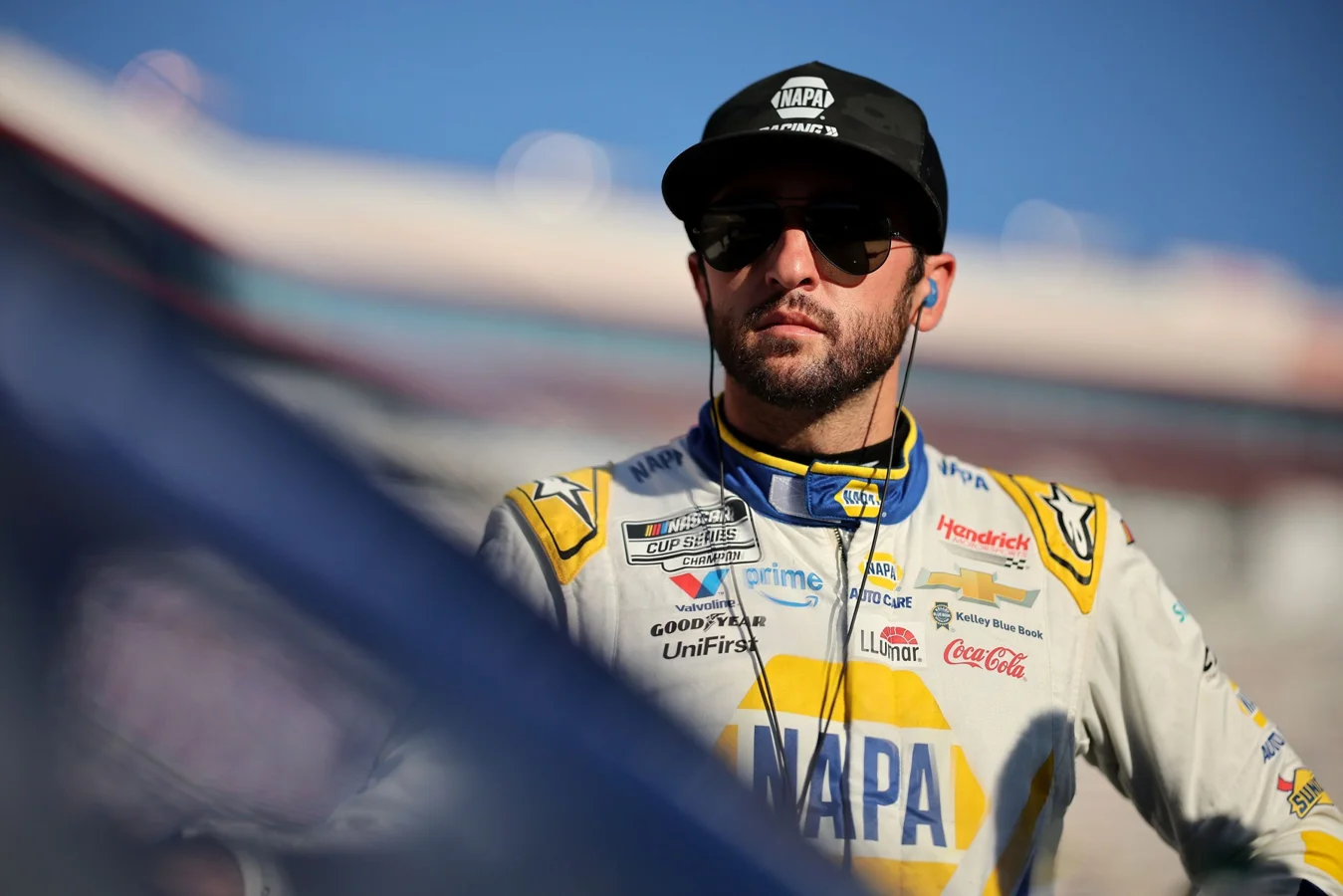During the Bass Pro Shops Night Race at Bristol, Chase Elliott’s night ended abruptly after sustaining significant damage in a late-race incident—an event that has raised questions about the dynamic conditions and tactical decisions associated with the Chase Elliott accident at Bristol.
Representing Hendrick Motorsports with his No. 9 chevrolet/”>Chevrolet, Chase Elliott was removed from contention after an accident during the final stage of the race. Elliott explained that as he tried to regain position on the track, a critical miscalculation occurred, involving both Joey Logano in the No. 22 car and John H. Nemechek in the No. 42. Elliott believed he was clear to rejoin the inside lane when the crash took place, resulting in damage that ended his hopes for a strong finish.
Elliott’s Breakdown of the Bristol Incident
Elliott described the sequence that led to the costly accident, emphasizing his attempt to rejoin the racing line and the unpredictability of the moment involving other competitors. He received an unexpected impact from behind, further complicating an already challenging situation.
“The No. 22 (Joey Logano) got position on me. I thought I was doing the smart thing just trying to get back to the bottom. I guess I thought I was clear back down in line. I visually saw the gap, so I just tried to get back in line and I got a huge shot from behind. I’m not sure if the No. 42 (John H. Nemechek) got pushed in there or he wasn’t expecting me to come back to the bottom or what the reasoning was, but nonetheless, it happened and it’s done.”
—Chase Elliott, Driver
Earlier in the race, Elliott had successfully fought his way from the back of the field, restarting 10th on the final restart after recovering from being a lap down. The struggle to regain ground meant Elliott and his team were constantly adjusting to the rapid changes in race pace and car balance, while also facing the notorious unpredictability of Bristol’s tire wear.

Challenges With Track Conditions and Tire Management
Elliott highlighted how the team had to work intensively on the No. 9 NAPA Chevy, responding to changing track dynamics and tire conditions that made driving particularly challenging, especially in the early and middle segments of the race. The competition remained fierce, and the battle to return to the lead lap involved strategic calls as well as adjustments to the car’s balance.
“It was super sketchy. It was hard to know how hard to push. Our No. 9 NAPA Chevy was really good for a few laps, and then I felt like we struggled. We had spent the majority of the night in the back of the pack, just trying to get ourselves back in position and back on the lead lap. Once we did and we got back up towards the front, I just felt like we needed some balance adjustments there once we started running the pace of the leaders. We were working on it and making it better.”
—Chase Elliott, Driver
The rapidly changing tire conditions added another layer of complexity to Elliott’s strategy. He discussed how tire wear dictated not only the car’s performance but also his approach behind the wheel, depending on whether he was stuck at the back or fighting amongst the frontrunners. Elliott suggested that decisions made early in the race about whether or not to pit may have influenced their overall performance and ultimately, their vulnerability at the end.
“I don’t know that it forced you to change your style as much as it was just where you were running and how much pace you were pushing. We were in such a terrible position getting trapped a lap down early. We were probably a little late to realize that we needed to stop. But on the same token, if it goes green, it probably would have worked out OK for us. Being in the back of the pack versus being upfront was certainly a big difference in how I was driving the car. We were working on our balance and it was slowly getting better.”
—Chase Elliott, Driver
What the Turn of Events Means for Elliott and Hendrick Motorsports
The outcome at Bristol leaves both Chase Elliott and Hendrick Motorsports with renewed considerations about race strategy and track position, especially as the season intensifies. The accident not only halted Elliott’s bid for a top finish but also provided insights into the necessity of adapting to in-race adversity, tactical calls, and the influence of other competitors like Joey Logano and John H. Nemechek.
For Elliott, the night underscores the harsh realities of Bristol racing—where a single misjudgment or unpredictable contact can erase hours of recovery and adjustment. As the team looks ahead, their focus will shift towards capitalizing on lessons learned to improve in upcoming contests on the NASCAR calendar.
